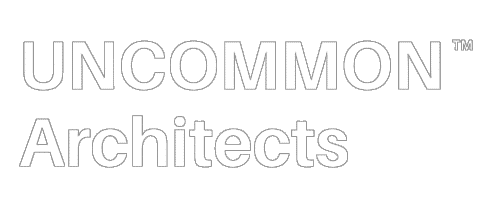Definition:
Visual content for architects refers to the use of images, videos, infographics, and other visual elements in marketing strategies tailored specifically for architectural firms. These visual components play a crucial role in capturing the attention of potential clients, showcasing design ideas, and conveying the unique aesthetic and style of a firm’s work.
Detailed Description
Visual content serves as a powerful tool in architectural marketing, allowing firms to communicate complex design concepts in a visually appealing and easily understandable manner. By leveraging high-quality visuals, architects can create a strong brand identity, demonstrate their expertise, and differentiate themselves in a competitive market.
Applications in Architecture
In architecture, visual content is used across various channels, including websites, social media, presentations, and marketing materials. Architects utilize visual storytelling to engage their audience, highlight key projects, and evoke emotion through striking imagery and innovative design concepts.
Uses:
Architects employ visual content to showcase their portfolio, attract new clients, and establish a strong online presence. By incorporating visually compelling elements, firms can enhance their credibility, build trust with potential clients, and stand out in a visually driven industry.
Examples:
An architectural firm may use immersive 3D renderings to provide clients with a realistic preview of a proposed project. By showcasing before-and-after images of renovation projects, architects can demonstrate their transformative abilities and highlight the impact of their design solutions.
Implementation
Procedure:
To effectively implement visual content in architectural marketing, firms should create a comprehensive visual content strategy that aligns with their brand identity and marketing objectives. This strategy should include guidelines for creating, curating, and sharing visual assets across different platforms.
Steps:
1. Define your visual brand identity and style guidelines.
2. Create a library of high-quality images and videos showcasing your projects.
3. Develop a content calendar to plan and schedule visual content across digital channels.
4. Engage with professional photographers and videographers to capture stunning visuals of your work.
5. Leverage social media platforms to share visual content and engage with your audience.
Considerations
Visual content should reflect the unique design aesthetic and values of your architectural firm, ensuring consistency across all visual assets.
Expected Outcomes
By incorporating visual content into your marketing strategy, architectural firms can expect increased brand awareness, higher engagement rates, and enhanced client perceptions. Visual storytelling can help architects connect with their audience on a deeper level, leading to improved client relationships and a competitive edge in the market.
Outcomes:
– Enhanced brand visibility and recognition
– Improved audience engagement and interaction
– Increased lead generation and client conversions
– Stronger emotional connections with potential clients
– Differentiation from competitors through visually striking content
Impact:
The short-term impact of visual content in architectural marketing includes immediate engagement and brand recognition, while the long-term impact involves building a strong visual identity and establishing credibility in the industry. Key performance indicators (KPIs) such as website traffic, social media engagement, and lead generation can be used to measure the effectiveness of visual content strategies over time.
Maintenance and Monitoring
Regularly monitoring the performance of visual content is essential to ensure its continued effectiveness in architectural marketing.
Best Practices:
– Track engagement metrics to gauge the success of visual content.
– Test and optimize visual assets for improved performance.
– Stay updated on visual trends and technologies to remain competitive in the market.
Strategies:
– Conduct A/B testing to compare the performance of different visual elements.
– Implement user-generated content strategies to increase audience engagement.
– Collaborate with influencers or industry experts to amplify the reach of visual content.
Additional Information
Related Terms
Associated Concepts:
– Graphic design
– Photography
– Branding
– Content marketing
Connections:
Visual content in architecture often intersects with graphic design and branding strategies to create a cohesive and impactful marketing presence. By integrating these related terms into their marketing strategies, architectural firms can create a unified and visually compelling brand image.
Recent Trends
Innovations:
Recent innovations in visual content creation, such as virtual reality (VR) tours and augmented reality (AR) simulations, have revolutionized the way architects engage with clients and showcase their work. These technologies offer immersive experiences that bring architectural designs to life and provide clients with interactive ways to explore projects.
Updates:
Staying up-to-date with the latest visual content trends and technologies is crucial for architectural firms looking to remain competitive in the digital landscape. By embracing new tools and approaches, architects can stay ahead of the curve and deliver cutting-edge visual experiences to their audience.
How Uncommonarchitects.com can help you with this
At Uncommon Architects, we specialize in creating visually stunning content that resonates with your target audience and elevates your architectural brand. Our team of creative professionals is dedicated to crafting compelling visual stories that showcase your unique design aesthetic and expertise. By partnering with us, you can expect tailored visual content strategies that drive engagement, enhance brand visibility, and set you apart in the competitive architectural market.
Explain how:
Through collaborative ideation sessions, in-depth market analysis, and a keen eye for visual storytelling, Uncommon Architects can help you elevate your architectural marketing efforts and achieve tangible results. Our track record of success stories and client testimonials speaks to our commitment to delivering exceptional visual content that captures attention, inspires action, and drives business growth.
Benefits:
By partnering with Uncommon Architects, you gain access to a dedicated team of visual content experts who understand the unique challenges and opportunities facing architectural firms. Our tailored solutions are designed to help you maximize the impact of visual content in your marketing strategy, drive audience engagement, and achieve your business goals. Contact us today to explore how we can transform your architectural brand through the power of visual storytelling.
Are you ready to transform your studio?
FAQs
What is visual content for architects?
Visual content for architects includes drawings, renderings, sketches, and 3D models used to communicate design ideas and concepts visually.
How important is visual content for architects?
Visual content is crucial for architects as it helps in conveying complex design information, exploring different options, and presenting projects to clients and stakeholders effectively.
What tools are used to create visual content for architects?
Architects use software like AutoCAD, SketchUp, Revit, and Adobe Creative Suite to create visual content, along with traditional tools like pencils, markers, and paper.
How does visual content enhance the architectural design process?
Visual content allows architects to visualize their ideas, iterate on designs, communicate with clients effectively, and make informed decisions throughout the design process.
Can visual content help in winning architectural competitions?
Yes, compelling visual content can play a significant role in winning architectural competitions by showcasing innovative design concepts and capturing the imagination of the jury.
What are the key elements of effective visual content for architects?
Key elements include clarity, accuracy, creativity, attention to detail, consistency with the design vision, and the ability to evoke emotion and inspiration.
How can architects use visual content to communicate with clients?
Architects can use visual content like 3D renderings, virtual reality simulations, and walkthrough videos to help clients understand the design, experience the space, and provide feedback effectively.
What are the benefits of incorporating visual content in architectural presentations?
Benefits include improved communication, better understanding of design intent, increased client engagement, enhanced visual impact, and the ability to stand out in a competitive market.
How can architects leverage visual content for marketing their services?
Architects can use visual content on their websites, social media platforms, and marketing materials to showcase their portfolio, attract potential clients, and demonstrate their design expertise and creativity.
What trends are shaping the use of visual content in architecture today?
Current trends include the use of virtual reality, augmented reality, interactive presentations, sustainability-focused visuals, and the integration of technology to create immersive and engaging visual experiences in architecture.

